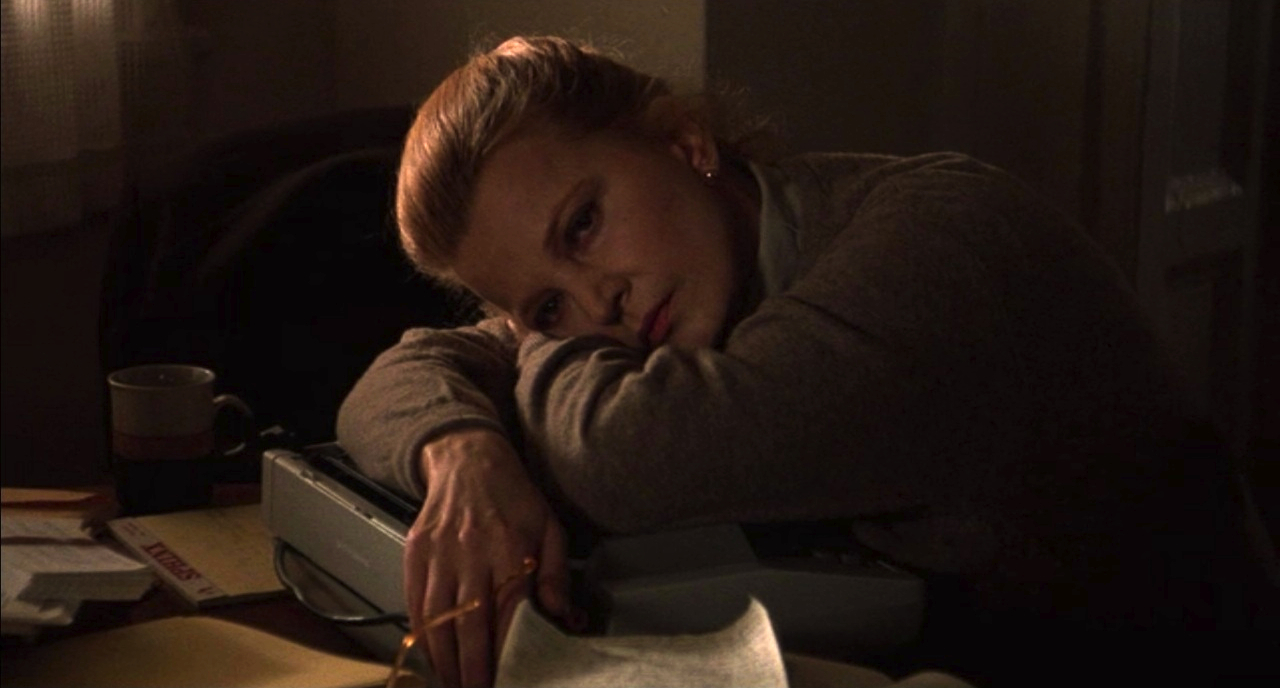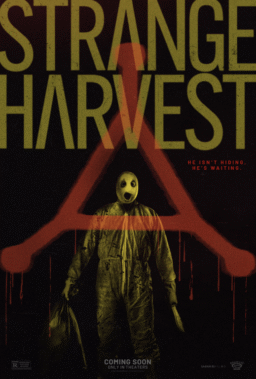Among a bunch of books on movies I have kept at my family home for years, there is an old movie guidebook I bought in 1996. Some of its contents later turned out to be inaccurate or questionable, but that pulpy guidebook was pretty entertaining to a certain chubby 13-year-old middle school student. That boy still fondly remembers some of its enjoyable passages, although almost 20 years have passed since then.
One of the more entertaining parts in the guidebook was a section devoted to Woody Allen’s movies, most of which were unfortunately not widely available to many movie fans in South Korea around that time (“Bullets Over Broadway” (1994) was the first one which was shown in South Korean theaters, for example). That part introduced me to many of his works, and discovering the old VHS copies of Woody Allen films in the deep corners of local video rental stores was always like finding hidden treasures for me.
One of Allen’s movies introduced in the guidebook was “Another Woman” (1988), which was described as his most serious and solemn work. When I fortunately came across its VHS copy at a video rental store in the downtown area of my hometown several years later, I immediately rented it without hesitation, and I was soon confirmed that the description was indeed correct. While it has been regarded as a minor work in Allen’s long filmography, even most of his more serious works were rarely so close and so penetrating like this melancholic character study, and it is also worthwhile to watch for one of the best career performances from Gena Rowlands, a great American actress whom I noticed for the first time through this small gem.
Rowlands, who recently received a well-deserved Honorary Oscar in this year, plays Marion Post, a New York philosophy professor who is entering her middle age years when we meet her during the prologue. Marion is a smart, intelligent, and confident woman at the peak of her academic career, and she briefly describes her life to us as the camera looks around the photos of several people in her life. As the proud daughter of a respected history scholar, she has built her own successful career with aconsiderable reputation, and she is about to write another book to be published. She married her second husband a few years ago, and their married life has been so far stable and comfortable while she maintains a fairly fine relationship with her husband’s teenage daughter from his first marriage. Her attire and appearance are impeccable but never too blatant, and even my mother, who knows how to look natural and graceful despite being 60, admired how Marion looks while she watched the movie with me a few weeks ago.
Because her current residence cannot provide a quiet environment for writing her book, Marion gets a small sublet place for her work in some Manhattan building, but then she discovers a distracting problem during her first days. She hears a voice from the ventilation duct, and it turns out to be from a session being held at a psychiatrist’s office in next door. She simply blocks the sound with a pair of pillows, and the place is quiet again as she continues to focus on her work without any interruption.
However, she happens to overhear some other session by coincidence. The patient is a woman who feels quite anxious due to her recent pregnancy, and something inside her faltering voice seems to strike somewhere inside the mind of Marion, who looks not only disturbed but also captivated by this voice of a stranger. She can just block it as before, but she does not, and she keeps listening to this unknown woman’s voice, as it becomes more introspective on her own life.
Allen made a simple but exceptional visual choice for the scene in which Marion listens to the voice more attentively than the first time. The movie is a rare case where he uses close-ups for dramatic effect, and his cinematographer Sven Nykvist surely knows how to capture the small emotional trembles glimpsed from Rowlands’s wordless face. After all, Nykvist was a frequent collaborator of Ingmar Bergman, and he and Bergman created some of the most memorable close-up shots in movie history through their collaborations in Bergman’s great films including “Cries and Whispers” (1972).
While she looks back on her life, Marion comes to realize that the people who are supposed to be close to her do not like her as much as she thought. When Marion meets her sister-in-law Lynn (Frances Conroy in one of her early roles), Lynn reminds her of how she has been cold and judgmental to her brother Paul (Harris Yulin) as well as Lynn. Marion and her stepdaughter Laura (Martha Plimpton, not long after her breakthrough role in “The Goonies” (1985)) are nice to each other, but Laura also sees how stern and critical her stepmother can be at times. In case of her cardiologist husband Ken (Ian Holm), he has been a stable presence in her life, but, as we observe more of their relationship, they look more like roommates who merely happen to share their bed.
As the movie keeps delving deeper into Marion’s state of mind, we get a number of intimate moments reminiscent of Bergman’s “Wild Strawberries” (1957), which is about an aging professor who comes across a chance to reflect on how he has been not so good to others around him throughout his unhappy life. Allen said during his interview with Stig Björkman that his screenplay was not particularly inspired by Bergman’s film and it was actually originated from a comic idea which he later utilized in “Everyone Says I Love You” (1996), but the similarities between “Wild Strawberries” and “Another Woman” cannot escape our notice, though they are like apples and oranges in terms of mood, character, and details.
One of the most distinguishable elements in the film is Rowlands’s superb low-key performance, which is quite far from her raw, intense emotional performances in her husband John Cassavetes’s movies. While she is a lot more subdued and guarded here in comparison, Rowlands is absorbing in every tentative step of her character’s emotional journey, and her performance is quietly powerful in how it conveys to us the internal crisis churning beneath Marion’s frigid façade. The more she opens her eyes to herself, the more she wants to look away, but there is no way back for her once she comes to recognize the cracks inside herself.
It is not much of a spoiler to tell you that the woman to whom Marion listens does exist, but that woman’s voice feels more like Marion’s inner voice which has been dialed down by herself for many years. When Marion hears again the voice of that woman not long after another meaning of the film’s title is revealed to us, we wonder whether it is real or imagined, but there is the undeniable emotional truth that Marion cannot be oblivious any more, and Rowlands is utterly devastating even though the camera looks at her silhouette from the distance.
Like other Allen films, the movie is packed with various talented performers, and they each have their own moment respectively around Rowlands. Mia Farrow, who will always be associated with Allen for better or worse, is effective as a catalyst of Marion’s drama while usually hovering around the screen with her voice, and her full appearance later in the film is aptly accompanied with a famous Gustav Klimt painting. Blythe Danner is one of Marion and Ken’s close friends, and Sandy Dennis is Marion’s estranged old friend who is not very pleased to see how her friend is just the same as before. As Ken’s bitter ex-wife, Betty Buckley has a tense moment of social embarrassment when her character unexpectedly drops by her ex-husband’s house, and Ian Holm is excellent when his callous character calmly and coldly handles this awkward situation with banal consideration in front of others including Marion. Philip Bosco is Marion’s first husband who was her mentor during her college years, John Houseman, who died around the time when the movie was released, is Marion’s aging father, while David Ogden Stires convincingly plays the younger self of Houseman’s character in a flashback scene. And Gene Hackman, who is surely one of the last actors you can imagine appearing in a Woody Allen film, shows his more tender side as a man who passionately reached to Marion but was ultimately rejected by her because of her fear of emotions.
As one of the shortest films in Allen’s career (its running time is a bit more than 80 minutes), “Another Woman” feels a little too short especially during its finale, but Allen’s screenplay is dense, precise, and succinct in hitting the right notes from the start to the end, and the final shot, which looks at Rowlands’s beautiful expressive face for the last time, is an almost perfect closing moment for its story and heroine. My guidebook warned that the movie would be very painful to watch for some, and its sober drama is indeed bleak and depressing at times, but it is also haunting and poignant as its heroine is gradually awakened to what she has regretfully lost and forgotten. It may be late, but, as people often say, it is never too late as long as you are alive.











